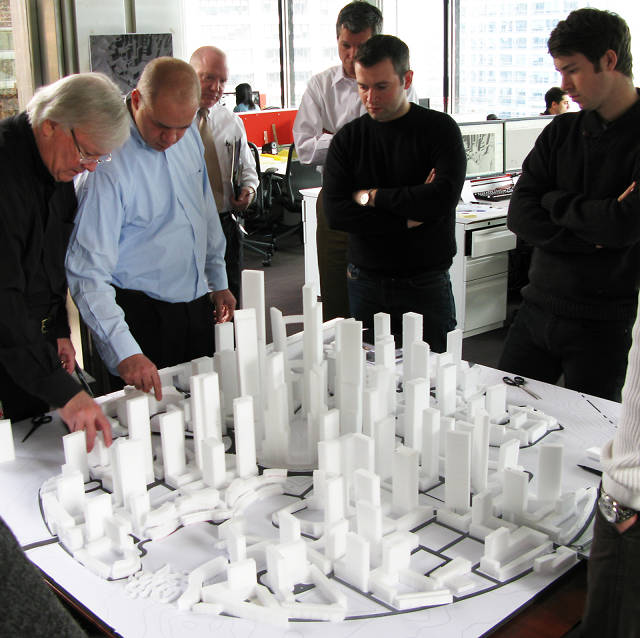China is planning a building
explosion of dense, sustainable suburbs, connected to its megacities by
public transit. Can these "prototype cities" alter the course of the
country’s unsustainable development?
In 1902, a self-taught urban planner named Ebenezer Howard published his utopian vision for "Garden Cities"--self-contained circular towns radiating from a central city, connected only by train. Neither town nor country, they were a dense, compact fusion of the two: suburbia without sprawl.
Although Garden Cities never really caught on in the West, the Chicago-based Adrian Smith + Gordon Gill Architecture has resurrected the idea with Chinese characteristics: a “prototype city” twice as populous and twenty times as dense, with a tower taller than the Empire State Building at its core. Working with one of China’s largest real estate developers, the firm aims to build them by the score.

The first is slated for a patch
of farmland roughly 10 miles from the core of Chengdu, China’s westernmost
mega-city. Designed according to the specifications of
Beijing
Vantone Real Estate Co., the master plan calls for 80,000 residents to
live and work within a half-square mile circle in which any point will be at
most a 15-minute walk away.
To achieve that level of density--which is comparable to the Chicago Loop’s--“the average height of the buildings would have to be 18 stories,” says Adrian Smith. But to preserve a 480-acre greenbelt around the city, and to mollify officials anxious about developers chewing up so much farmland, the plans call for towers as high as 400 meters (1,312 feet), taller than anything in Chengdu itself. (At least until AS+GG complete their commission for a separate 450-meter tower downtown.)
Trains and mass transit will connect the satellite city to the Chengdu’s core as part of the firm’s plans to restrict cars and dramatically reduce the city’s carbon footprint. With the help of infrastructure consultants Mott McDonald, the city will deploy a raft of tactics and technologies to holistically address waste, water and energy in a manner designed cut landfill by 89%, wastewater by 58%, and energy by 48% compared to a typical Chinese city its size--which is good, because Vantone plans to sell at least one to every mega-city in China.

As Smith tells it, his partners
at Vantone settled on the parameters of their neo-Garden City even before
they found a site. “They were looking outside Beijing as well,” says Smith,”
but the first [city] that said ‘let’s do this’ was Chengdu.”
“The old Ebenezer Howard satellite city concept never happened much in Europe, but with the growth and control that exists in China, it’s possible,” Smith adds. “It’s what, 80,000 people? That’s not huge. You’d need 12 to get to a million people.”
Vantone and AS+GG aren’t the first to propose a bright green protoype for China’s mega-urbanization. Not content to design entire cities-from-scratch, a raft of foreign architects, developers, and even sovereign governments are offering their projects as template. Maybe the most famous is Songdo, the “city-a-box” designed by the architects Kohn Pedersen Fox on behalf of American developers Gale International. Plans to build as many as 20 sequels across China are on hold, although one is proceeding outside the provincial capital of Changsha without Gale’s involvement.
AS+GG’s Smith is looking even further abroad. “We think it makes sense not just for China, but for India as well,” he says. “Since India has no infrastructure to speak of,” or at least not enough to double the densities of its already mind-bendingly populous centers, “you have to build out from the city’s core.” Ebenezer Howard would be proud.
This message was taken from Co.Exist

No comments:
Post a Comment